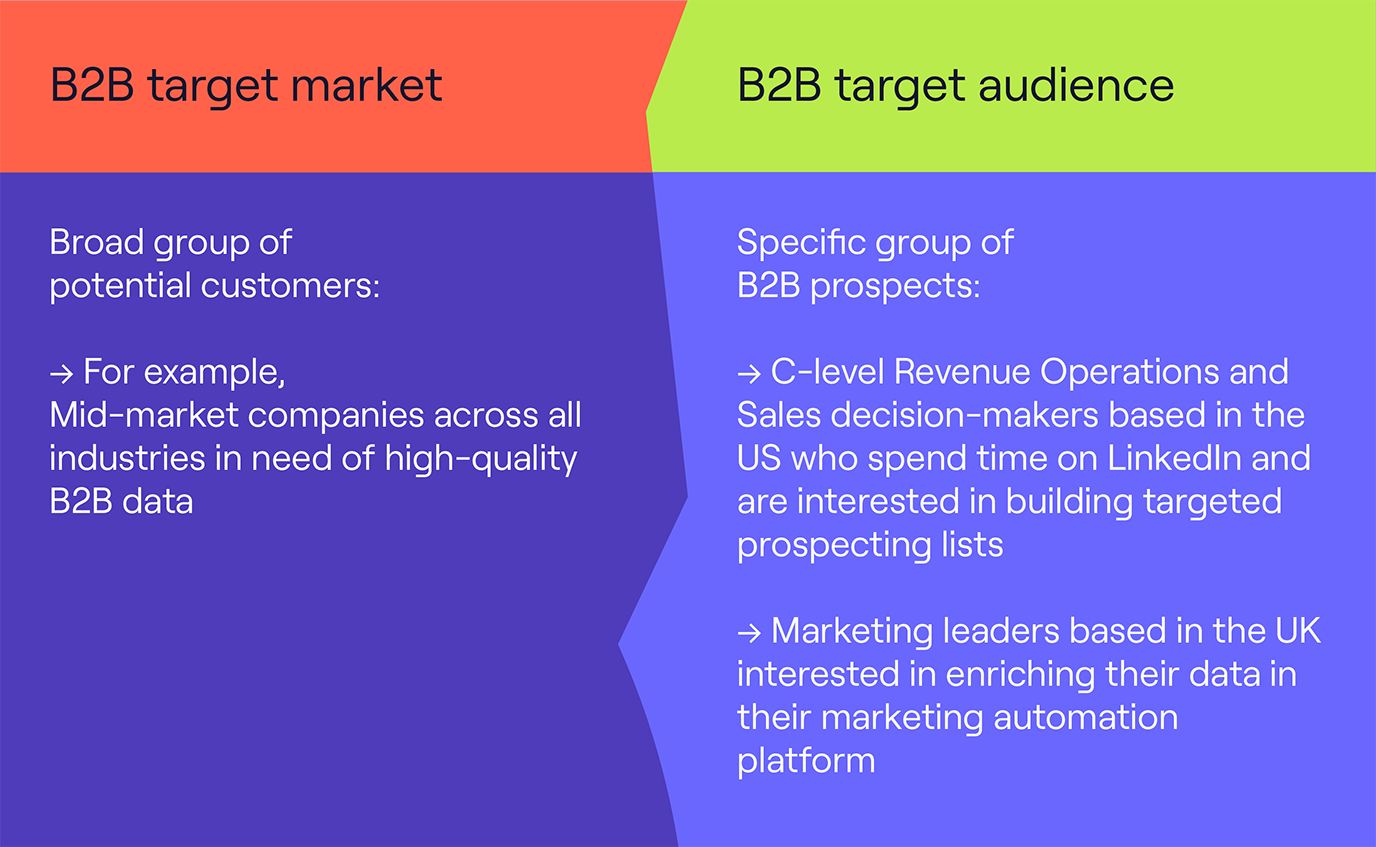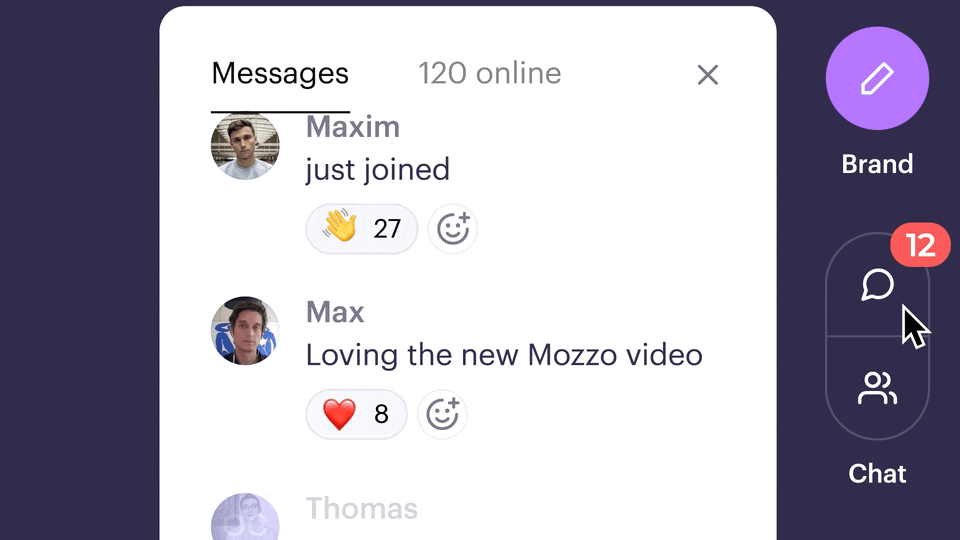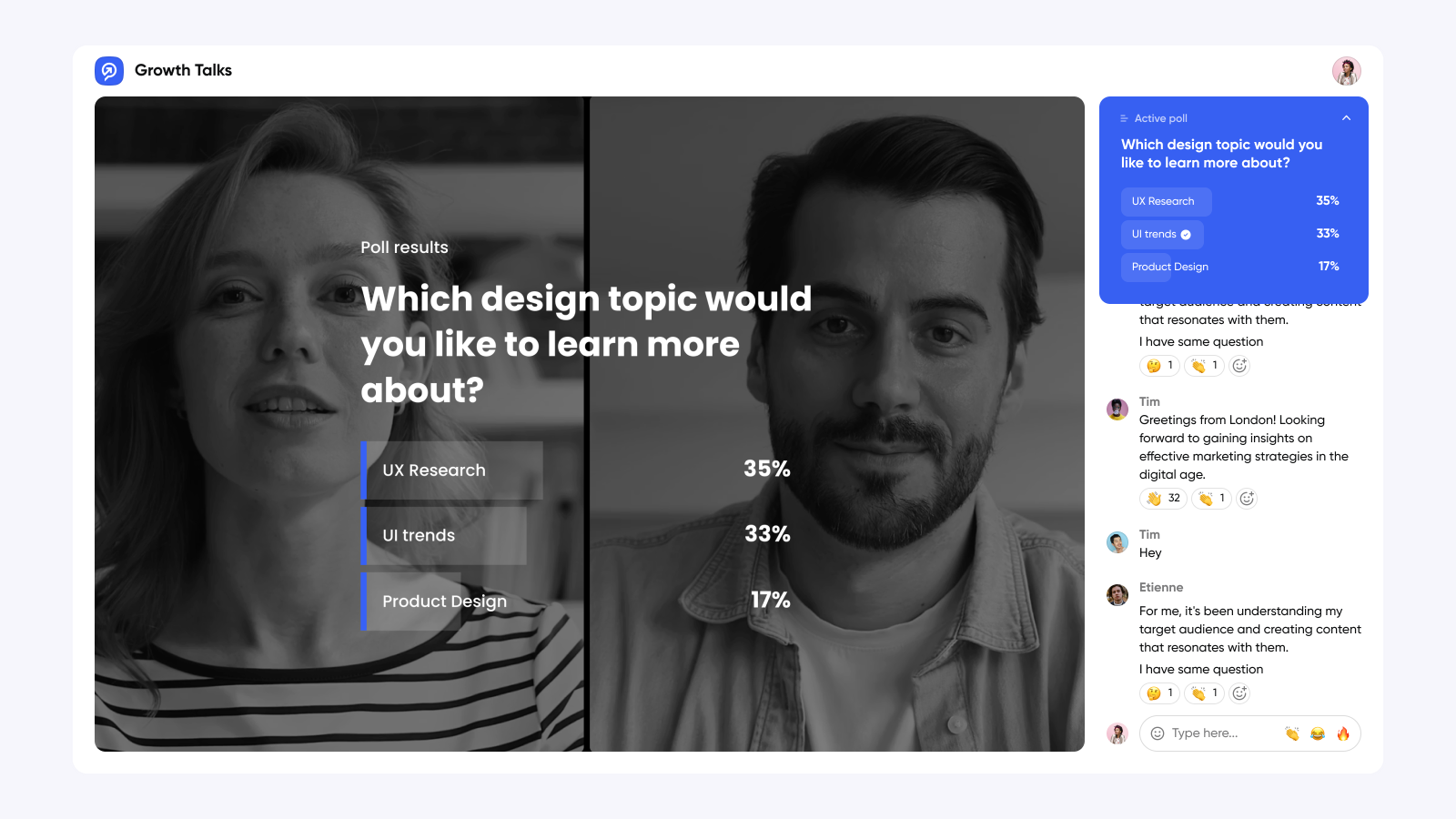Webinars are as pervasive as reality TV shows, but have infinitely more value. Crafted correctly, they can be your golden ticket to audience engagement, lead generation, and brand authority. But, the question is, how do you create an award-winning webinar, the 'Game of Thrones' in a world awash with 'Jersey Shore' equivalents?
Here's your answer, grounded in research and experience. This blog post uncovers sure-fire tactics to turn your webinars from bland to brilliant, backed by research from 100+ companies running webinars. No guesswork, no untested theories, only strategies proven to deliver results.
After all, in the digital world, every word should weave a compelling narrative, every slide should captivate, and every statistic should prove a point. Welcome to an avenue to shape meaningful conversations through your webinars, where the science of research marries the art of communication. Let’s amp up your webinar game!
Crafting Your Webinar Strategy: A Step-by-Step Guide
Devise a powerful webinar strategy that matches your business objectives, engages your audience, and maximizes impact. The section will guide you through defining your webinar goals, identifying your target audience, creating captivating content, promoting the webinar, hosting, following up, and improving your strategy.
- Nail down your webinar goals for defined outcomes
- Determine your target audience for tailored content
- Learn to create content that captivates and enforces your webinar's message
- Understand efficient ways to promote and host your webinar
- Follow-up tactics that increase conversion rates
- Optimize future webinars based on feedback
Step 1: Define Your Webinar Goals
Setting defined, data-based goals is crucial to a successful webinar. Your objectives determine the direction of your content, your audience, and your success metrics.
SMART goals are a powerful framework for setting clear, achievable objectives. The acronym SMART stands for Specific, Measurable, Achievable, Relevant, and Time-bound. Each element serves as a guideline to ensure your goals are well-defined and within reach.
- Specific means your goal should be clear and precise, so you know exactly what you're aiming for. Instead of saying, "I want a lot of registrants for my webinar" specify the goal to something like, "I want 300 people to register to my webinar"
- Measurable criteria allow you to track your progress. For the webinar goal, it's easy to measure the number of registrants in your webinar dashboard.
- Achievable means setting realistic goals that you're capable of accomplishing. It's about finding the balance between challenging yourself and not setting yourself up for failure.
- Relevant ensures that your goal matters to you and aligns with your other business objectives. It's about making sure the goal is worth your time and effort.
- Time-bound adds a deadline, creating urgency and helping you focus. For example, aiming to achieve those 300 registrants for your next webinar in 2 weeks.
Using SMART goals helps to clarify your ideas, focus your efforts, and use your time and resources productively. By making your objectives as specific, measurable, achievable, relevant, and time-bound as possible, you're more likely to achieve them.
These could also include educating customers about a new product, successfuly hosting a product demo, or generating high-quality webinar leads for your sales team, or instilling brand trust among potential investors etc.
Step 2: Identify Your Target Audience
Understanding your target audience is equally critical, shaping both your message and your presentation. Identifying who they are, what they care about, where they spend their online time will guide your content creation and promotional efforts.
Knowing the preferences and habits of your audience can shape the way you frame your webinar topics. This understanding simultaneously ensures relevance, engagement, and a higher probability of attendance.

Step 3: Develop Engaging Content
The heart of any successful webinar is engaging, valuable content to capture your audience's attention. Building content that resonates with your audience improves the overall webinar experience, driving engagement rates, and ensuring your message sticks.
The most interactive webinar platforms will help create engaging content with:
- Branded video
- Topics & Transitions
- On-screen transitions
Make sure you have a catchy webinar title and registration page as this will have a big impact on how your audience views the potential quality of your content.
Step 4: Promote Your Webinar
Webinar promotion is crucial for getting your webinar in front of your target audience.
The right promotion strategy encompassing email invitations, social media posts, influencer marketing, communities, and collaborations can make a significant difference in your registration numbers.
Elevo increased saw a 300% bump in registrations while investing 50% less time by automating a large part of their webinar strategy using Contrast and their HubSpot integration.

Step 5: Host Your Webinar
Choosing the best webinar platform to host your webinar smoothly is key to leaving a lasting impression on your audience. It involves technological adeptness, engaging presentation skills, and effective Q&A management.
Contrast, Zoom, GoToWebinar, are a few examples of webinar platforms:
- Contrast is the modern webinar tool build for branding, engagement and ease of use. Creating a webinar takes under 2 minutes and access all the engagement features on the free plan.
- Zoom is the go-to choice for many companies that already have a Zoom licence, but the webinar capabilities are lackluster and attendees often get Zoom fatigue.
- GoToWebinar is a good choice for people who worry less about the visual appeal of their webinars and want to minimize cost.
Deciding which platform to choose involves a careful analysis of their offerings, level of support, their popularity and credibility in your industry, and of course, the price tag.
By weighing different platforms' key features and usability in line with your needs, you can effortlessly pick the webcam platform most suitable for your webinars.
Step 6: Follow Up After the Webinar
The conversation doesn't end when the webinar ends. Sending follow-up emails to participants, sending them the webinar materials, and gathering feedback can drastically improve your conversion rates.
These follow-up emails should contain a link to the on-demand webinar, any useful resources that were shared along with the content, and a thank you note for people who attended.
Consider including a post-webinar survey to get more information and feedback from your audience on what they liked or disliked about the webinar so you can double down on what works.
Don't forget to set up reminder emails for your webinar too
Step 7: Analyze and Improve
Finally, analyzing your webinar KPIs and utilizing feedback improves future strategies. Understanding what worked and what didn't aid in improving for next time, leading ultimately to increased success.
Here's a breakdown of the most tracked webinar KPIs:
- Registration Numbers: This KPI tracks how many people signed up for your webinar. High registration numbers indicate effective promotion and interest in your topic.
- Attendance Rate: Not everyone who registers will attend. Increasing attendance rate is crucial for improving the ROI of your webinar. It helps gauge the effectiveness of your reminders and the real interest in your webinar content.
- Engagement Metrics: These include participation in polls and surveys, questions asked, chat activity, and social media mentions. High engagement levels suggest that the content is resonating with your audience.
- Conversion Rate: If your webinar has a specific goal (e.g., product sales, sign-ups), this KPI measures the percentage of attendees who take the desired action. It's a direct indicator of the effectiveness of your webinar funnel in driving business goals.
- Drop-off Rate: This measures when and how many attendees leave the webinar before it ends, providing insights into how engaging and relevant your content is throughout the session.
- Feedback Scores: Post-webinar surveys can give direct feedback on what attendees thought about your webinar. This can include ratings on content quality, presentation skills, and the overall experience.
- On-Demand Replay Views: If your webinar is available for viewing after the live event, tracking how many people watch the replay can extend your understanding of its long-term value.
Monitoring these KPIs allows organizers to refine their webinar strategies, improve content delivery, and better meet their audience's needs, leading to more successful and impactful webinar analytics and ROI.


Your Next Webinar Ready in Under 2 Minutes
Start for free up to 30 registrants. No credit card needed.
Start for freeMaximizing the Impact of Your Webinar Strategy
- Unlock webinar reach with strategic social media promotion
- Induce active participant engagement using the right webinar platforms
- Watch your webinar strategy yield remarkable results
Leveraging Social Media for Webinar Promotion
Today's digital age sees people more connected than ever, making social media webinar promotion a powerful tool in your arsenal. Correctly leveraged, it can yield exceptional results.
With millions of users worldwide, platforms like LinkedIn, Twitter, and Facebook provide excellent avenues for promotion. You can choose to amplify your reach cheaply and effectively with targeted ads catering to your niche audience.
Social media also offers a unique avenue for exciting teaser content. Creating and sharing bite-sized, engaging content can build up anticipation and encourage more sign-ups or on-demand views. Repurposing your webinar is a great tactic to drive more content views even after the live is over.
LinkedIn - A gold mine for B2B promotion
Unsurprisingly, LinkedIn stands out amongst other platforms for B2B webinar promotion.
Compared to other platforms, LinkedIn's more professional setting aligns better with the B2B audience's mindset, making it possible to reach clients and potential clients without the distractions of personal posts that can often be found on other platforms.
Pro tip: Don't just post about the upcoming webinar. Tease the content, give some value before the session itself, a sample of the content they can expect.
Utilizing Webinar Platforms for Better Engagement
The selection of the best webinar platform for interaction plays a crucial role in participant engagement.
While a number of solutions exist, it's essential to select a platform that complements your webinar goals and audience needs. Look out for features like Q&A sessions, live polling, and screen sharing. This can make your webinar more interactive and engaging.

Remember that the webinar should not be a one-way street. Encouraging two-way interaction can facilitate a richer audience connection and boost the overall participant satisfaction.
Polls and Q&As - A pathway to participation
Integrating elements of interactivity like Polls and Q&As can amplify participant involvement.
Take Q&As, for example—a study reveals that Q&A sessions can hold the audience’s attention 5.5 times longer compared to traditional one-way presentations.
An active poll during your webinar triggers quick response and provides real-time insights into your audience's thoughts. Q&As allow for deeper understanding and personalized attention, helping your audience feel valued and invested.

Showing the poll results on-screen in real-time with Contrast has shown to get 30% more results than a normal poll.
Your webinar strategy, combined with adept social media promotion and well-selected webinar platform capabilities, sets you off on a journey that maximizes your webinar's impact. Achieve wider reach and higher participant engagement—one webinar at a time.
Understanding the Basics of Webinars
Kickstarting your webinar strategy requires a close understanding of what a webinar is and its implications in digital marketing.
TL;DR:
- Grasp the essence of what a webinar is.
- Learn about the relevance of webinars in the digital marketing spectrum.
- Explore webinar formats and best practices.
- Learn to overcome common challenges in webinar strategies.
What is a Webinar?
A webinar, a portmanteau for 'web-based seminar', is a live, virtual event that is conducted online. They typically include visual elements such as slides, interactive touchpoints, and Q&A sessions between the presenter, guest speaker, and the audience.
The interactive nature of webinars makes them an ideal platform for learning, discussion, and engagement. They differ from traditional seminars in that participants can join from any location, thus removing geographical constraints.
Why are Webinars Important in Digital Marketing?
Webinars for marketing have marked their importance in the digital era. 80% of marketers hail them as the most effective content for capturing quality leads and boosting their marketing game.
They form an effective two-way communication channel, allowing marketers to not only share information but also engage directly with their audience. The interactive nature of webinars provides participants with value-added experiences, helping build and nourish relationships.
Besides, the reach of webinars is not geographically confined, thereby helping businesses spread their influence far and wide. They are also known to provide an efficient way for lead generation and nurturing.
Common Webinar Formats
Webinars come in a variety of formats to suit different purposes. Choosing the right format is crucial for maximizing the effectiveness of your online event. Here are some common webinar formats:
- Single Speaker: A straightforward format where one expert or presenter shares their knowledge on a specific topic. This format is ideal for deep dives into subjects where the speaker has significant expertise.
- Interview: This format features a conversation between a host and one or more guests. It's engaging and can provide diverse insights on a topic, making complex information more accessible through questions for the guest speaker.
- Panel Discussion: Involving multiple experts discussing a specific topic, panel discussions encourage different viewpoints. This format is great for exploring subjects from various angles and is highly interactive for the audience.
- Q&A Sessions: These webinars are highly interactive, focusing on answering questions from the audience. They can stand alone or follow a presentation, making them excellent for engagement and clarification on complex topics.
- Workshops or Training Sessions: These are interactive sessions designed to teach or train attendees on particular skills or practices. They often include demonstrations, step-by-step guides, and interactive elements to practice learned skills.
- Product Demonstrations: Tailored for showcasing new products or services, product demos format allows for live demonstrations, highlighting features, benefits, and use cases to potential customers.
- Case Study Webinars: Focusing on real-life examples, case study webinars showcase stories of how a product, service, or strategy has succeeded or failed. They provide valuable insights and practical lessons learned.
- Roundtable Discussions: Similar to panel discussions but usually more informal, roundtable discussions involve a small group of experts talking about a topic in a conversational style, often without a predetermined script.
Best Practices for Hosting Webinars
Rocking your webinars requires adherence to some best practices. These include:
- Choosing an engaging topic
- Including clear call-to-actions
- Ensuring proper preparation
- Webinar promotion
- Learn how to moderate a webinar
- Conducting rehearsal sessions (in the Studio)
- Incorporating interactive elements
- Testing your cam and mic
- Repurposing your webinar
- Integrating your webinar tool with other tools
- Embedding your webinar on your website
An engaging topic is bound to attract more participants, while rehearsals help address any technical glitches in advance.
Refining Your Webinar Wisdom
Remember: attention-grabbing content, strategic promotional tactics, an engaging host, exploring various webinar formats, maximising audience interaction, effective follow-up, and consistent refining based on data-driven insights - these are the ingredients of a killer webinar strategy.
Why does it matter? Because webinars position you as a thought leader within your industry, and, done right, it’s a lucrative lead generation method. It grows your brand's awareness, quality leads, and ultimately, revenue.
So, the ball's in your court now. Start planning your next webinar using these researched-backed tactics. Refine past strategies, test fresh approaches, and measure the outcomes to continually improve.
Calling all savvy B2B Marketeers, we've talked tactical - how will you implement these proven tips in your next webinar?


Your Next Webinar Ready in Under 2 Minutes
Start for free up to 30 registrants. No credit card needed.
Start for free